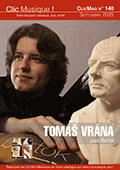 Bien que vivement critiqué pour ses qualités de gestionnaire pendant son pontificat, le pape Léon X fut un grand protecteur des arts et de la musique plus particulièrement. Grand mélomane, il maîtrisait même les connaissances techniques nécessaires à la composition pour cinq voix. Sous son règne, le chœur papal, organe responsable de la musique liturgique au sein de la papauté, fut enrichi de quelques-uns des plus éminents chanteurs, instrumentiste et compositeurs de l’époque. Une grande partie de la musique jouée à la cour de Léon X a aujourd’hui disparue. S’il n’y a aucune trace des notes de luth ou des improvisations des instruments à vent, plusieurs manuscrits et ouvrages d’époque attestent de l’existence de polyphonies sophistiquées. Ce riche aperçu de l'univers musical de Léon X vient du Codex Médicis, une collection de 53 motets destinés dans un premier temps à un usage privé, finalement présenté à l’été 1518 au retour en Italie de son neveu Lorenzo de Médicis, duc d’Urbino. De ce précieux document est tirée la grande majorité des compositions présentées dans cet enregistrement.  Godiamo ci il Papato, poichè Dio ci ?l’ha dato. ‘Let us enjoy the papacy, since God has given it to us’ – thus, according to a contemporary report, Giovanni de’ Medici, the second son of Lorenzo the Magnificent, on becoming pope in March 1513. Enjoy it he did. In the eight years of his reign, Leo X, as Giovanni now became known, lived extravagantly, holding banquet after banquet, hunt after hunt, and sometimes parading a white elephant through Rome. His costly enthusiasms extracted their price, of course; within two years of taking the throne, he had turned a handsome surplus left him by his predecessor into a deficit, and before long he had to raise funds by such dubious tricks as selling indulgences on a grand scale – provoking what would eventually become the Reformation. Yet Leo did not exhaust the papal treasury on frivolous things alone. A man of extensive humanistic learning, he supported notable scholars and poets, including Pietro Bembo; commissioned major works from Raphael; and initiated significant building projects. Above all, Leo loved music. He knew it from the inside, possessing sufficient technical knowledge to compose in five voices. He staffed the papal choir – the body responsible for music at liturgical services – with some of the most eminent singers and composers of his day, and he maintained a ?private body of musicians that similarly included several highly prized singers, composers, and instrumentalists. Much of the music heard at Leo’s court ?has vanished. We don’t know what his lutenists performed, nor can we retrieve the improvisations of his wind players. But we have an impressive record of the sophisticated polyphony sung around him: several manuscripts and printed books produced at his court or in its immediate orbit preserve works of both his own composers and others favoured by him and his musicians. A particularly vivid image of Leo’s musical world comes from the so-called Medici Codex, a collection of 53 Motets possibly meant at first for Leo’s private use but ultimately presented to his nephew Lorenzo de’ Medici, Duke of Urbino, as Lorenzo returned with his new bride, the ?French princess Madeleine de la Tour d’Au-vergne, to Italy in the late summer of 1518. With the exception of the first and last pieces, all the music on this recording comes from the Medici Codex.
 |
